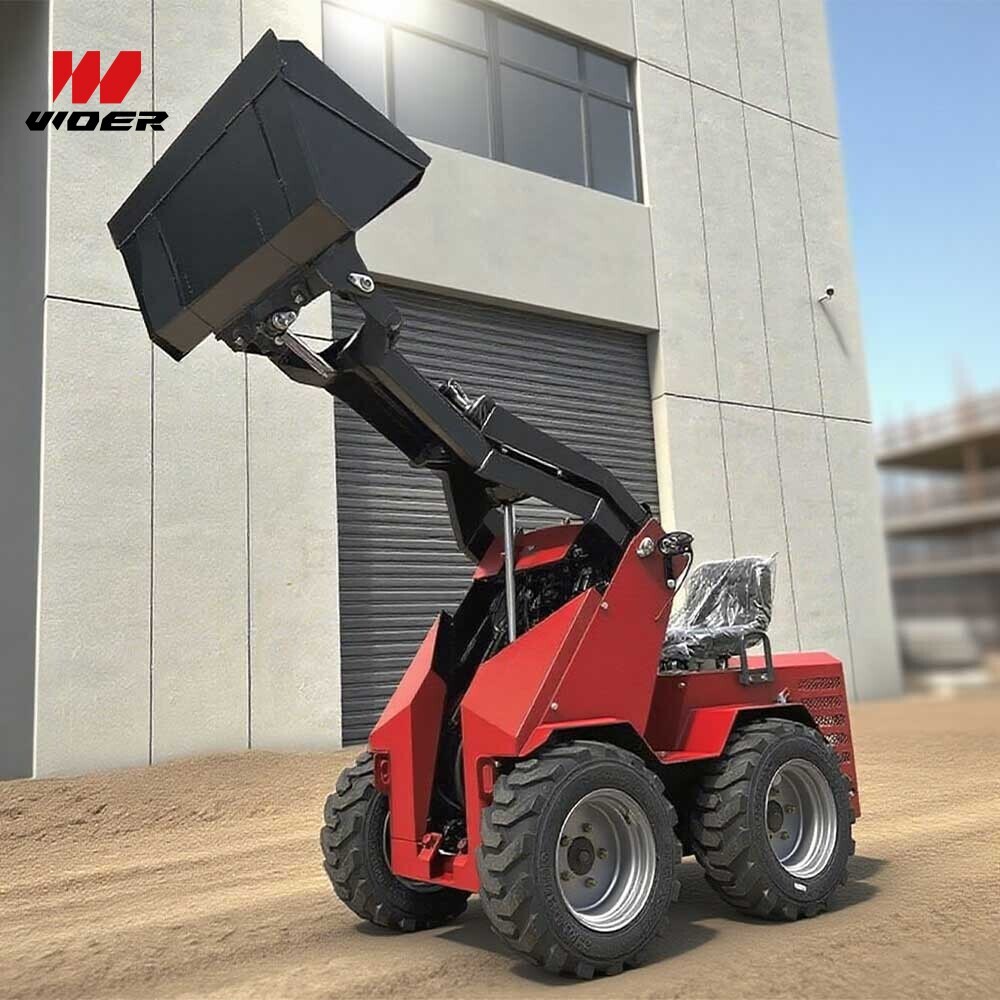Navigation
Contact us
Phone
Message

Why EPA Grants Matter for Track Skid Loader Fleets
Federal and state clean-air grants can significantly reduce the capital expenditure for upgrading to low-emission equipment such as track skid loaders. For businesses in wood processing and related heavy-access sites, replacing legacy mini skid steer diesel crawler loader units with EPA-compliant models lowers particulate matter (PM) and NOx emissions, improves site air quality and can shorten payback periods when fuel and maintenance savings are considered.
Key Stakeholder Concerns Addressed
Decision-makers and financial approvers want measurable ROI, compliance officers focus on regulatory alignment, and operators need machines that sustain productivity. Effective grant strategies answer all three: demonstrate emissions reductions, provide technical specs (engine Tier level, DOC, DPF), and show operational parity with existing skid steer loader crawler loader equipment.
Which Equipment Typically Qualifies?
Eligible equipment often includes low-emission track skid loaders and mini crawler skid loaders certified to EPA Tier 4 standards or equivalent. Search grant guidance for terms like "EPA skid steer loader" or "track skid loader epa". Common qualifying categories include:
- New track skid loader, mini steer skid loader and mini walk behind skid steer loader models meeting Tier 4 final emissions;
- Repowered engines with verified emission-control modules;
- Zero-emission replacements (electric track loaders) where grant programs support electrification pilots.
Application Essentials: Data, Baselines and Outcomes
An effective application quantifies current fleet emissions and projects reductions after procurement. Include engine hours, fuel type, typical duty cycles, and maintenance records. Compare a typical mini skid steer track loader skid steer loader diesel unit against proposed replacement in estimated annual fuel use and emissions saved.
Technical Evaluations: What Engineers Need to Verify
Technical evaluators should verify engine certification (EPA Tier), aftertreatment systems, and actual in-use performance. Consider testing cycles that reflect forestry or wood-processing tasks. Confirm that a mini steer skid loader can meet lifting, traction and hydraulic performance needs—especially when transitioning from skid steer loader crawler loader to track platforms that alter ground pressure and stability.
Common Performance Checks
- Rated operating capacity and breakout force compared to existing units;
- Ground pressure and track width for site protection and slope capability;
- Hydraulic flow and pressure for attachments used in wood processing;
- Serviceability of diesel systems or charging infrastructure for electric models.
Procurement and Financial Strategy
Combine grant funds with vendor incentives such as skid steer loader free shipping, extended warranties or bundled maintenance plans. For example, some suppliers will offer promotional freight terms or finance packages for fleet buys of mini crawler skid loaders when matched with grant awards. Structure procurements to align delivery timelines with grant disbursement schedules to avoid cash-flow gaps.
Cost-Benefit Factors
- Upfront price difference between legacy mini skid steer diesel crawler loader and new compliant track skid loader;
- Estimated fuel and maintenance savings over machine life;
- Residual value improvements and reduced downtime from newer engines or electric drivetrains;
- Administrative costs of grant reporting and compliance monitoring.
Operational Guidance: Training and Maintenance
Operators transitioning to mini steer skid loader track platforms or to a mini walk behind skid steer loader should receive training on track maintenance, attachment compatibility and emissions system indicators. Maintenance plans should adopt OEM-recommended service intervals and include DOC/DPF inspection points where applicable. For contractors shifting fleets, documentation of operator training can strengthen grant reporting.
Case Example and Practical Outcome
A mid-sized wood-processing yard replaced three older mini steer skid loaders with two modern track skid loaders and one compact walk-behind model. Grants covered 30% of procurement; combined with vendor shipping incentives, the project achieved a projected 45% reduction in fleet NOx and a two-year simple payback through lower fuel and servicing costs. This illustrates how targeted replacements, rather than one-for-one swaps, can deliver better site outcomes.
Standards, Compliance and Documentation
Link technical claims to internationally recognized standards such as EN and ASTM test cycles where applicable. Include engine certification documents, purchase orders, and in-use monitoring plans in grant submissions. Many EPA or state programs require follow-up reporting for two to five years—plan internal resources accordingly.
Common Pitfalls and How to Avoid Them
Avoid assuming all compact loaders qualify; read program definitions carefully. Do not neglect total cost of ownership analyses. Ensure attachments used in wood processing are compatible with mini crawler skid loaders and that transport and storage logistics fit your site constraints. Finally, submit complete applications early—grant funding is often competitive and time-limited.
Product Integration (Added Resource)
For ancillary site productivity, consider complementary equipment that improves ground maintenance and access. One example is the Diesel Grass Cutting Machine Automatic Portable Lawn Mower With Seat, which can support vegetation control around processing yards and loading areas, reducing fire risk and improving access for tracked machines.
Why Choose Us and Next Steps
We combine technical assessment, grant-writing support and procurement advisory tailored to fleets operating in the wood-processing sector. Our approach aligns equipment selection—whether a mini steer skid loader, a track skid loader, or hybrid solutions—with measurable emissions outcomes and robust ROI analyses. Contact us to arrange a fleet audit, a customized grant eligibility review, and a procurement timeline that secures financing and favorable delivery terms.
Ready to proceed? Request a consultation and let us map your path to an EPA-compliant, lower-emission fleet with cost-effective procurement options and operator-ready solutions.

This stunning beach house property is a true oasis, nestled in a serene coastal community with direct access to the beach.
Contact
West Street, Melbourne Victoria 3000 Australia